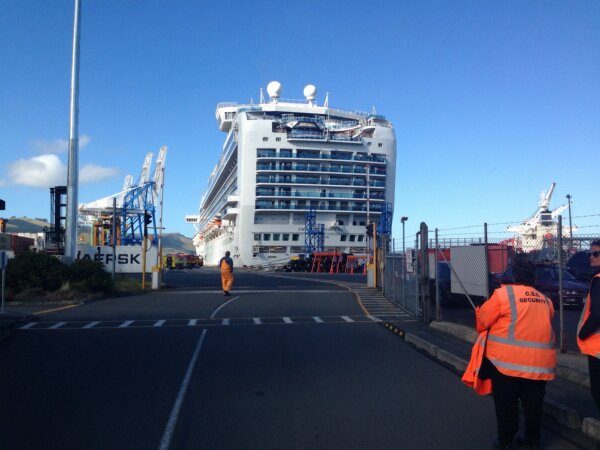
The cruise ship industry is defending its safety record in New Zealand waters after 33 incidents, including three deaths.

The incidents, reported to Maritime New Zealand since 2009, include engine failures and blackouts, groundings, near-misses and injuries to passengers and crew, in ports and at sea.
Five incidents occurred in waters around Otago, Southland and Fiordland, and two more near the Snares Islands, south of Stewart Island.
While some were minor, others included the death of a Filipino crew member killed when a gas cylinder exploded on the Emerald Princess at Port Chalmers earlier this year.
The incident, which is still being investigated, was among three deaths involving cruise ship crew in New Zealand ports since 2009.
In 2011, an Indonesian crewman from the Volendam drowned in Lyttelton Harbour after falling from a lifeboat when a corroded wire rope snapped while he worked on it.
And, in 2009, an Australian crewman of Sri Lankan descent died on the Oceanic Discoverer after being crushed by a watertight door during a fire drill at Napier's port.
Both deaths led to investigations by the Transport Accident Investigation Commission (TAIC), which identified failures and recommended improvements.
Despite this, Maritime New Zealand acting director Nigel Clifford said the cruise ship industry remained well-regulated and safe.
The number of cruise ships visits was increasing, but the number of incidents remained largely static, and that trend was expected to continue.
''We cannot eliminate all risks from sea travel, but we do as much as possible to reduce and manage them through international, national and regional planning, co-operation and preparedness,'' he said.
Cruise Lines International Association (CLIA) Australasia managing director Joel Katz also defended the industry, saying cruise ships remained ''incredibly safe''.
''The cruise industry experiences an extremely low number of operational, safety-related incidents and the introduction of sophisticated and innovative safety technologies has made cruising even safer.
''While incidents are relatively rare, in an industry where safety is the top priority, cruise lines are transparent in reporting incidents to relevant authorities.''
In the South, incidents reported to Maritime NZ included two groundings of the French cruise ship L'Austral in one month earlier this year.
The vessel - a regular visitor to Dunedin - hit an ''unknown object'' while drifting near the Snares Islands on January 9, and ''made contact'' again while rounding a point at the entrance to Milford Sound on February 9.
The Island Passage also ran aground at the entrance to Fiordland's Caswell Sound after its anchor dragged on February 22 last year, leaving its aft section stuck until refloated by an incoming tide six hours later.
Island Escape Cruises chief executive Peter Bissett, the vessel's owner, declined to comment in detail, but changes to the vessel's operating procedures had been made.
''Every incident is serious, of course, but on the scale of seriousness, this is low.''
The cruise ship Orion also struck difficulties at the Snares Island on December 17, 2010, when engine failure triggered an 18-minute blackout.
Passengers also suffered broken bones in a series of trips and falls on board vessels, which had also been involved in several near-misses while docking.
That included the Voyager of the Seas, which in 2013 was just 60m from the wharf at Port of Tauranga when a fishing boat passed between the ship and the wharf, ignoring whistles and radio calls.
In another incident, ''very heavy'' seas stripped a life-raft and 700-litre external petrol tank from Oceanic Discoverer, washing both overboard, near Cape Palliser on January 16, 2013.
Cruise New Zealand executive officer Kevin O'Sullivan declined to discuss ''operational'' safety issues when contacted.
Carnival Australia spokesman David Jones also referred questions to CLIA, the international industry body, but a Royal Caribbean Cruises spokeswoman said safety remained ''our highest priority''.
Ships were designed and operated to strict international regulations, with on-board medical facilities and regular safety drills and training for passengers and crew.
''We constantly employ learnings and experience to update our procedures to reflect industry and company best practice,'' she said.
Mr Clifford, of Maritime NZ, said the International Maritime Organisation (IMO) regulated the operation of cruise ships, and New Zealand was a member.
Under its conventions, Maritime NZ staff carried out regular inspections to check compliance with safety standards, and worked with other regulators and stakeholders, including port companies and cruise lines, to ensure best practice, he said.
Port Otago chief executive Geoff Plunket said he was impressed by the industry's approach to safety.
''They take it very seriously.''
There were challenges ahead, but ''we hope'' the number of incidents would not grow as visits did.












